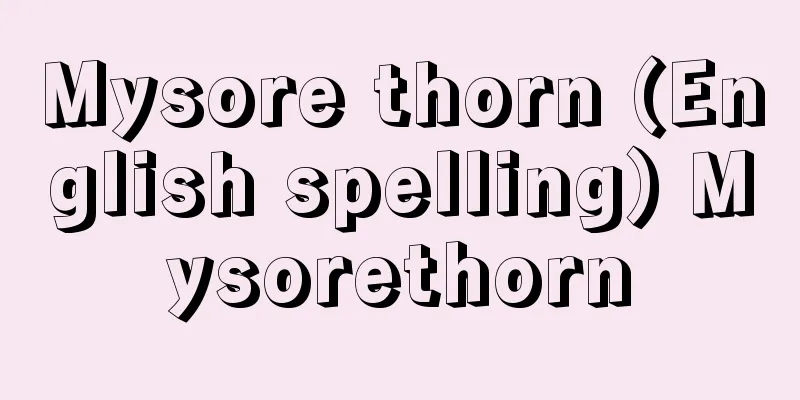Horsetail - Sugina

|
A summer-green fern of the Equisetaceae family. It is a herbaceous plant consisting of nodes and internodes. The rhizome runs long underground, and above-ground stems branch out from the nodes. There are two types of above-ground stems: spore stems and vegetative stems. The spore stems emerge in early spring, followed by vegetative stems. The spore stems are also called "tsukushi" (horsetail, head vegetable), and are a single fleshy, light brown stem with no branches, and sheaths with dark brown, ligulate leaves attached at each node. These are commonly called "hakama." At the top of the stem, a pine cone-shaped sporangium is attached. The vegetative stem is green, and at the nodes, ligulate leaves are attached in a sheath-like shape, and branches with nodes grow in whorls. It can be found in fields and roadsides everywhere. Horsetail is a spring delicacy, and can be mixed with sesame and mustard, or simmered or pickled. Remove the stems and quickly rinse in boiling water with a pinch of salt to remove the bitterness before cooking. The vegetative stems contain anhydrous silicic acid, as well as excetonin, a type of saponin, and excetin, a type of alkaloid, and can be used as a folk remedy for diuretics. Equisetum palustre has a sheath-like ligulate leaf with a white membranous tip, does not produce sporangia, and instead produces sporangia at the tip of the vegetative stem. It is found in cooler areas from the Chubu region of Honshu northward. [Makoto Nishida] It is commonly found in plains and mountains in early spring. The spore stalk is a single light brown stalk called " tsukushi " and is edible. The vegetative stalk is green and has whorls of ligulate leaves that are fused together like a sheath and branches with joints. Horsetail ©Kanzo Otawa "> Horsetail (specimen drawing) ©Shogakukan "> Horsetail Source: Shogakukan Encyclopedia Nipponica About Encyclopedia Nipponica Information | Legend |
|
トクサ科の夏緑性シダ。草体で、節と節間部からなる。根茎は地中を長く走り、節から地上茎を分出する。地上茎には胞子茎と栄養茎の2型があり、早春に胞子茎が出たあとに栄養茎が出る。胞子茎は「つくし」(土筆、筆頭菜)ともいい、肉質で淡褐色の1本の茎で枝を出さず、節ごとに濃褐色の舌状の葉が合着した鞘(さや)がある。これを俗に「はかま」とよぶ。茎頂には松かさ状の胞子嚢穂(のうすい)をつける。栄養茎は緑色で、節から鞘状に合着した舌状葉と、節のある枝を輪生する。至る所の野原や道端にみられる。 つくしは春の味覚で、ごまやからしで和(あ)えたり、煮物、ひたし物にする。はかまをとって、塩を一つまみ入れた熱湯でさっとあく抜きしてから調理する。また栄養茎は無水ケイ酸のほか、サポニンの一種エキセトニン、アルカロイドの一種エキセチンを含み、利尿に効く民間薬にもなる。 イヌスギナE. palustreは鞘状の舌状葉の先端が白い膜質で、胞子茎をつくらず、栄養茎の先端に胞子嚢穂をつける。分布は、本州中部地方以北の涼しい地方。 [西田 誠] 早春、平地や山地に普通にみられる。胞子茎は淡褐色の1本の茎で「つくし」とよばれ、食用となる。栄養茎は緑色で、鞘状に合着した舌状葉と節のある枝を輪生する©Shogakukan"> スギナ ©大多和鐘三"> スギナ〔標本画〕 ©Shogakukan"> つくし 出典 小学館 日本大百科全書(ニッポニカ)日本大百科全書(ニッポニカ)について 情報 | 凡例 |
>>: Skinner - Burrhus Frederic Skinner
Recommend
American Independence Party
...At his inauguration as governor in 1963, he sh...
Christian Religion - Reform of the Christian Religion
…After the dismissal of the Small Construction Ma...
Sautrāntika (English spelling)
Also called the Sutra school. A sect of Indian Bud...
Bronte sisters - Bronte sisters
The three sisters, Charlotte Brontë (1816-55), Emi...
Educational method - Kyoikuho
A new field of modern law that is being formed as ...
Aragamehishiba - Aragamehishiba
...The stem branches out from the base and spread...
Kanto Governor's Office Army Department
…Japanese army units stationed in Manchuria (pres...
Guest seat (Irori) - kya-kuza
…The Irori had seats designated for the positioni...
Six tones - Rokuchoushi
Six types of tuning used in the Tang Dynasty of g...
Birthday - Tanjoubi
A day to commemorate birth. In ancient Japan, the...
stannite
…A mineral whose main component is tin. There are...
chausson
...Add the flour and mix lightly, then transfer t...
Makal, Mahmut
Born in 1930, Demirci is a Turkish peasant writer....
Name fortune telling - Seimeihandan
A method of judging a person's fortune from t...
Catalogue - Catalogue (in English) catalog/catalogue
Catalog. A catalog or guidebook for exhibits, prod...









